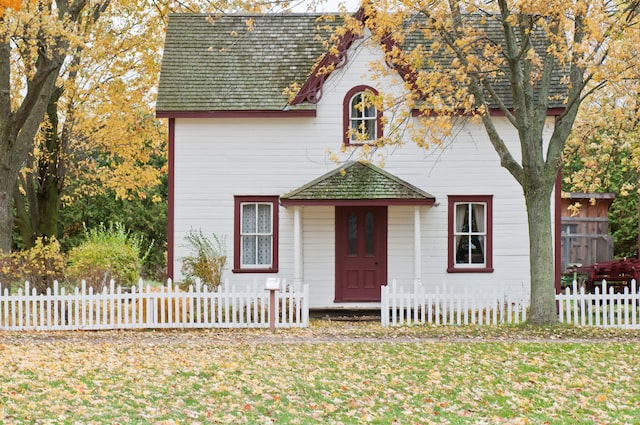In 2024, home improvement spending is expected to decline from $481 billion to $450 billion in 2023. This drop indicates that embarking on a home improvement is now more demanding than ever.
To help you through the process as you juggle work, family, and the occasional existential crisis over whether to go with Chantilly Lace or Simply White for your walls, we are looking through some of the simple ideas you can tackle by yourself to give your indoor and outdoor spaces a special look.
The aim is to find materials that inspire creativity. With some DIY magic, you can still do home improvement on a budget, with your sanity mostly intact by the end.
Let’s dive in and explore some ideas.
Pallet Furniture: Trash to Treasure
Pallet furniture is the quintessential recyclable product in an age of rapidly deteriorating forest cover. Old palettes are seeing use in the furniture industry, being turned into stunning beds, couches, outdoor furniture, tables, benches, and more.
Idea: An outdoor sofa, for instance, is a simple idea that requires sanding or light planning some pallets, painting them with your favourite colour, and fashioning cushioning from simple plans available online. Throw some cushions on, get creative with its overall structure, and have yourself a welcoming outdoor couch.
Materials needed: Sandpaper/planer, plaint, screws, and cushions.
Accent Walls: Two (or more) Colours Are Better Than One
If your walls could talk, they might ask for some help getting more personality. An accent wall is one of those simple ways to add a pop of colour or texture to any room without committing to a full makeover.
Idea: Use MDF or plywood panels to create a shiplap wall. It is easier than it sounds and can change a space’s vibe entirely.
Materials: MDF or plywood sheets, paint, and nails.
Floating Shelves: When You Need Stylish Space
Shelves aren’t just for sorting books or showing off random knickknacks. They can also be a design statement.
Floating shelves add a modern look to the house and are practical and easy to install. With some LEDs hidden behind them to complete the look, it leaves the walls looking like something from science fiction.
Idea: Install floating shelves in your living room or kitchen to add more space while keeping things stylish.
Materials needed: Timber, screws, and brackets.
A Reading Nook: A Personal Space
Your room may feel too voluminous and not private enough, but it could present an opportunity to create a nook just for you. Such a space is easy to create and adds a charming touch to the home.
Idea: Build a window seat with storage underneath. Use plywood and comfy cushioning to encase yourself in a warm, private space.
Materials needed: Fabric, plywood, and foam.
Raised Garden Beds: For a Better Crop
You don’t need to buy all your groceries. A raised garden bed is a great way to isolate fertile, controllable ground that you can use for growing herbs and spices as well as flowers to make the outside breath-taking and lovely.
Idea: Construct raised garden beds using timber or bricks. Fill them with your favourite plants and enjoy whatever fruits, vegetables, or flowers you grow.
Materials needed: Bricks or timber, soil, and plants.
How To Ensure Your DIY Projects Go Well
To help you ensure that the projects you start see completion, here are some of the most shared tips from DIY enthusiasts:
- Know your limits– Understand what you can realistically do and when it is better to call a professional. It can not only save you money but potential safety hazards.
- Invest in quality tools– High quality means you are only limited by your skills and not your tools. It may be expensive to start, but you will have them for longer and enjoy better performance.
- Plan thoroughly– Ensure you have the plans needed to complete the project. This includes accurate measurements, the stages involved, and the materials required. Where available, check out video tutorials to follow along.
- Learn what you don’t know– Take the time to learn the correct techniques for certain tasks. This could mean reading a guide, asking for advice, taking a class, or watching tutorials.
- Safety first– Prioritize your safety. As a non-professional, it can be easy to get things wrong. However, you don’t have to pay a heavy price for it, as you can learn to use the tools involved and invest in relatively cheap safety wear.
- Start small– tackling small problems is the best way to get into DIY projects. Start with the most doable project within your skills and confidence level before moving up.
You can get most materials for small projects from Building Materials Wholesale, including sheet materials https://sheetmaterialswholesale.co.uk :
- OSB
- Chipboards
- MDF
- Plywood
- Doo Blank
- Hardboard
- Fire Board
- Decorative Panels
There are also insulation materials (including external facades, building materials, plasterboard and drylining) https://insulationwholesale.co.uk and bricks (facing bricks, engineering bricks, special shape bricks, glazed bricks, and creasing tiles.) https://brickwholesale.co.uk
Remember to stay organized, take time to ensure quality work, seek advice when needed, and document your progress in case you need to go back.
Good luck with your home improvement project!

